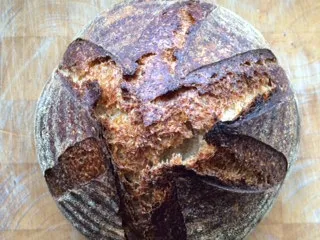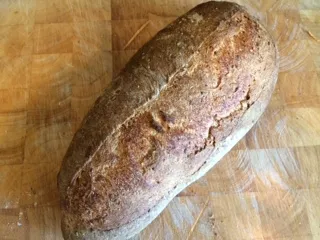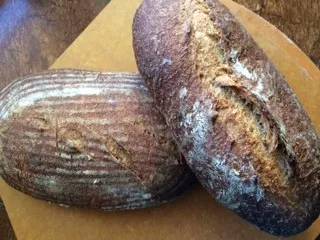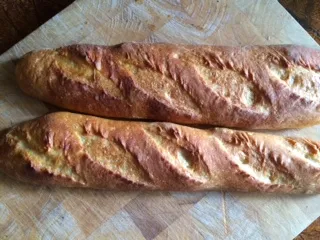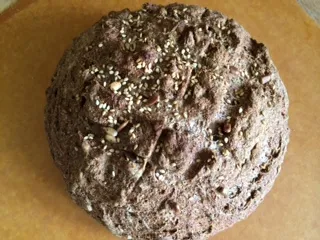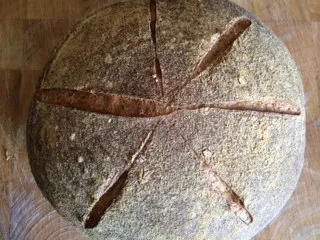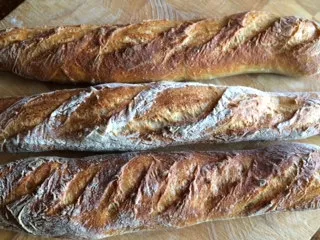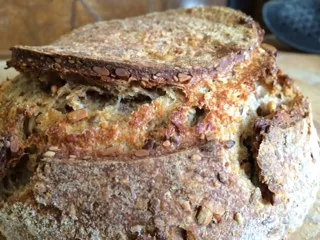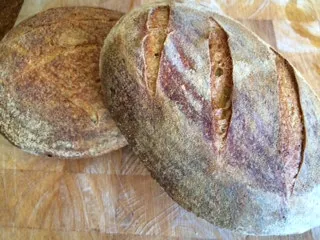Sourdough with rye and soaker in covered baker
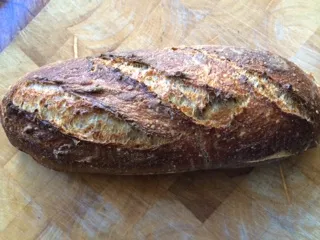
My experiments continued this morning, as I baked another dough I had frozen very recently. This was a variation of Khalid's recipe that I have made a couple of times. I really enjoy this bread as it has lots of different grains in the soaker, and it is ready to go so quickly. I defrosted the loaf yesterday in the fridge and took it out at 6 a.m.
